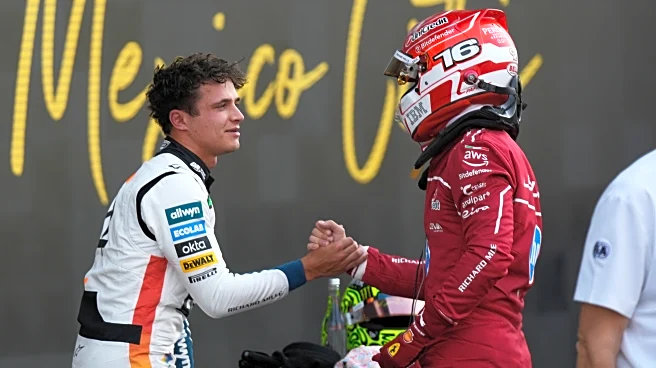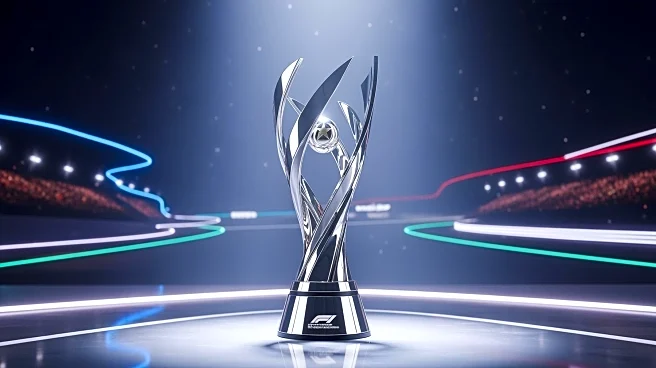What's Happening?
Carlos Sainz has joined Williams from Ferrari, forming a strong driver pairing with Alex Albon for the 2025 Formula 1 season. The team is closely monitoring the performance of these two highly-rated drivers throughout the season. In qualifying sessions,
Albon leads with scores of 8-11 against Sainz, while in sprint races, they are tied at 2-2. The Mexican Grand Prix highlighted the competitive dynamics between Sainz and Albon, with Mekies explaining their strategies and outcomes. The season has seen various head-to-head battles among drivers, including notable matchups like Max Verstappen vs. Yuki Tsunoda at Red Bull and Charles Leclerc vs. Lewis Hamilton at Ferrari.
Why It's Important?
The arrival of Carlos Sainz at Williams marks a significant shift in the team's strategy, aiming to leverage his experience and past successes to enhance their competitive edge. This pairing with Alex Albon is expected to boost Williams' performance in the championship, potentially improving their standings and attracting more sponsorships. The competitive dynamics within the team could lead to strategic decisions that impact race outcomes and team morale. The broader implications for the Formula 1 industry include increased competition among teams, influencing driver market movements and team strategies.
What's Next?
As the season progresses, Williams will continue to evaluate the performance of Sainz and Albon, making strategic adjustments as necessary. The team will focus on optimizing their race strategies to capitalize on the strengths of both drivers. The ongoing head-to-head battles will be crucial in determining the team's position in the Constructors' Championship. Stakeholders, including sponsors and fans, will be watching closely to see how this new driver pairing impacts Williams' overall performance.
Beyond the Headlines
The partnership between Sainz and Albon at Williams could influence future driver contracts and team compositions in Formula 1. The competitive nature of their pairing may set a precedent for other teams to follow, emphasizing the importance of balancing experience with emerging talent. This development also highlights the evolving landscape of Formula 1, where driver movements and team strategies are increasingly dynamic.














